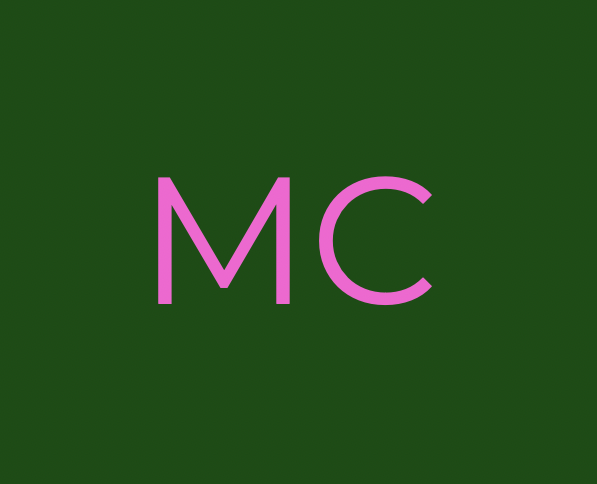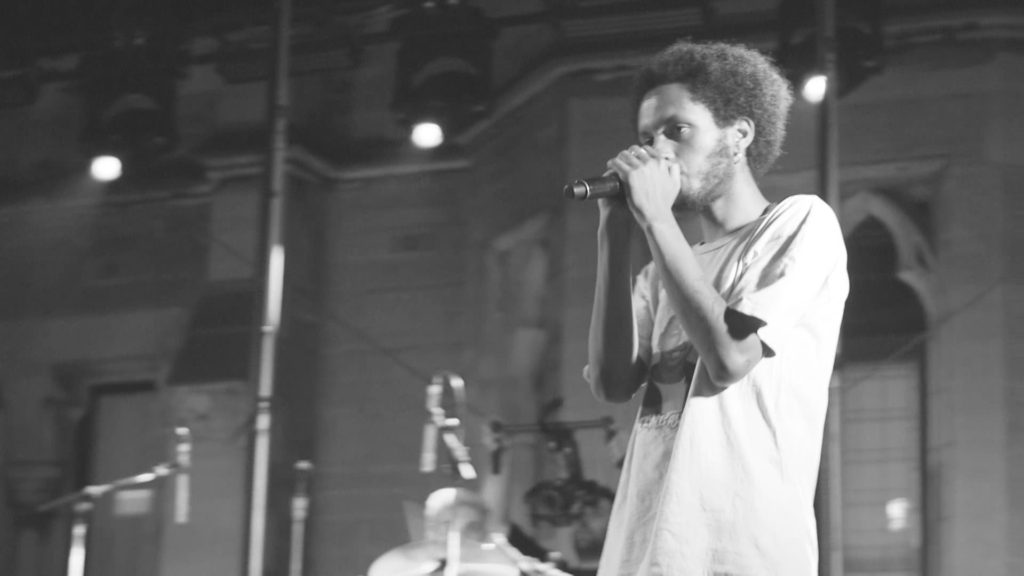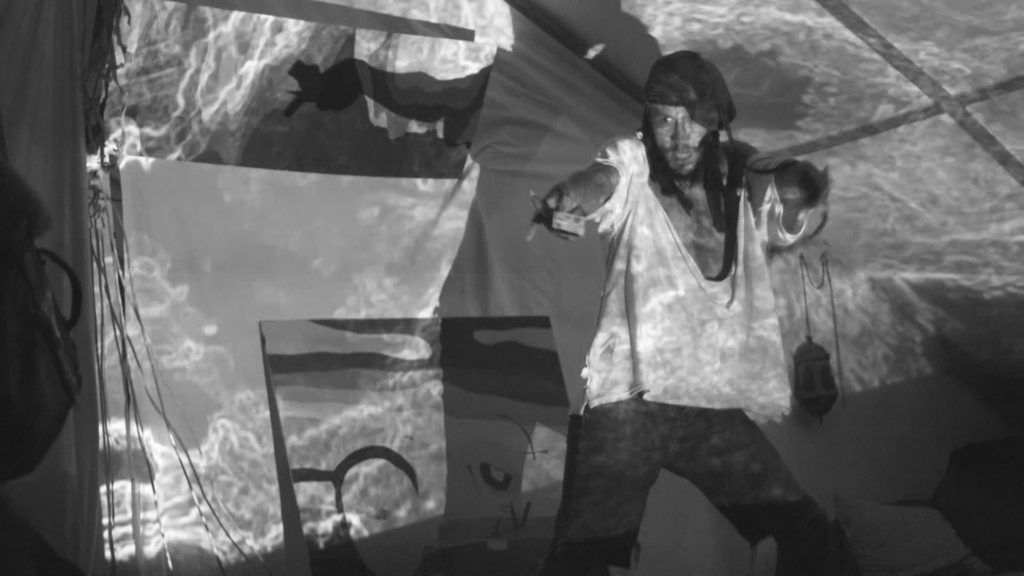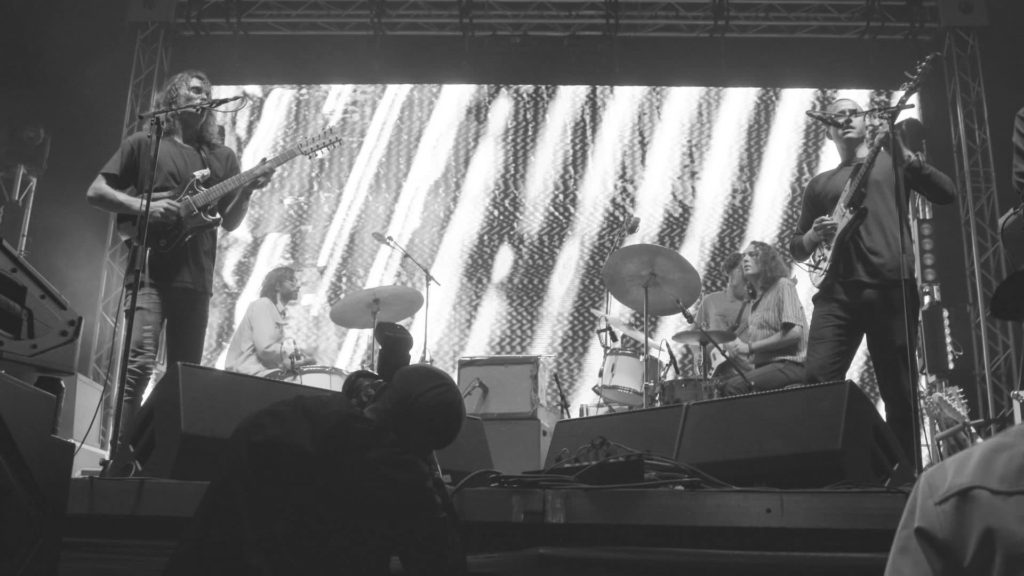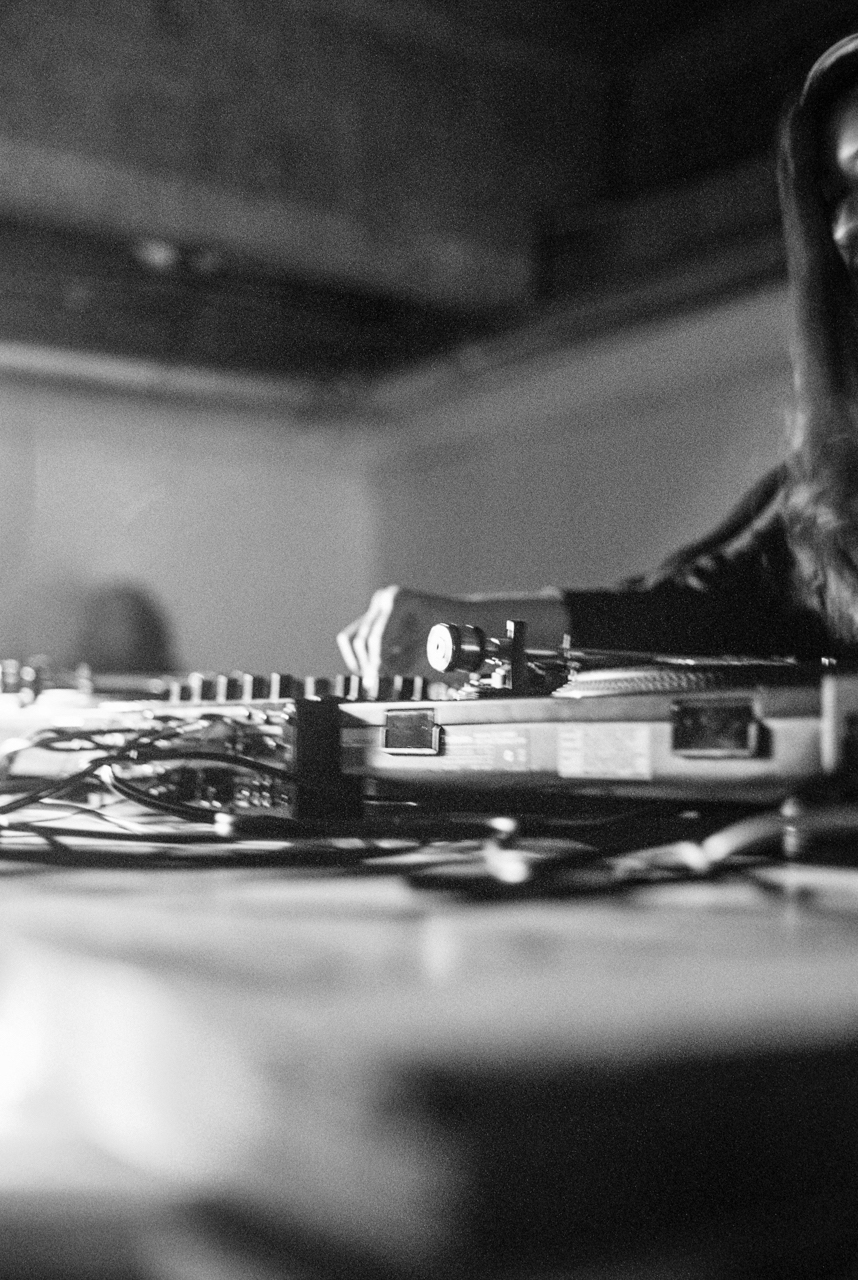NOW SOUND
Famously known as the live music capital of the world, Melbourne has achieved iconic status. Countless local artists have launched their careers on the storied stages of the city’s inner north, even while gentrification threatens the scene’s viability and other issues, including sexism, continue to undercut it. Now Sound: Melbourne’s Listening, an immersive capsule of Melbourne indie music: the musicians, festivals, independent radio, stages, labels, rallies, record stores and personalities. It’s an insider’s perspective on what makes Melbourne so special, while refusing to shy away from the issues, addressing gender imbalance and gentrification. The Melbourne Critique spoke with Director Tobias Willis along with producer and music journalist Marcus Rimondini, whom together created this filmic homage to our local music scene
Introduce us to the project, its back story, and the final cut- what does this film give to audiences, and what does it give back to Melbourne’s live music scene?
Marcus: I lived in New York late 2012 during the tale end of the indie boom in Williamsburg and experienced why many important artists were coming through that area just before that time. I, then, went back to review the music event CMJ in New York late 2015 and Williamsburg wasn’t the same anymore. On the flip side, all the Melbourne artists were stealing every show played that week. Brooklyn was losing the creatives vs high rent battle, while Melbourne was benefitting from Sydney’s troubles with rent prices, similar to those in Williamsburg. During that week, reviewing CMJ, I stayed in an Airbnb with Tobias Willis, who I knew from music festivals in Melbourne. He was there filming the Melbourne band Sunbeam Sound Machine. That week I gained a lot of respect for his music passion and his mind, open to different genres and new music, in general.
Then, after spending six months back in Melbourne, over that ‘15/’16 summer and truly appreciating the vibrancy, sonic variety and community that was still happening here, I wanted to do more than just blog about it on RipeMusic.com.au. I contacted Tobias about the idea of making a documentary, and it turned out he, also, thought about this idea, but needed someone with music industry connections. We were, kind of, a perfect match for this very challenging project.
We, then, spent over a month around May and June 2016 having coffee meetings with everyone I knew, at the time, in the community. Asking questions about what subjects we should cover, who we should interview that we may not know yet, finding scenes we should look more into, jotting down relevant topics we needed to ask during interviews. I think, we were also really hoping people would tell us we’re crazy and that we shouldn’t do it, but everybody was too positive, people really wanted us to capture everything that was happening, and the fact that everyone kept going out of their way to meet up with us for coffee, gave me the confidence that there was definitely interest in the project, which could allow me to organise interviews with the people I didn’t know yet.
This documentary does many important things. The most important thing is that it gives Australia, not just Melbourne, something it’s never had before: a documentary that’s forward thinking, focusing on the future, not the stereotypes that Australia is still associated with around the world. It’s not a rock dog film. It’s not about the Melbourne shuffle. It features a variety of sounds unique to Melbourne. It’s not racist, it’s inclusive. It’s highlights perhaps the best LGBTQIA+ music community in the world. It tackles sexual assault norms in public spaces. In an age where commercial music continues to give modern music a bad name, Now Sound informs people of the advocacy power of independent music, independent radio, independent labels, independent festivals and, when all these hard working passionate people come together, they can create awareness panels such as LISTEN or Face The Music. Music is only the connection between these special people, people who deserve a bigger platform. Australia as a whole can learn a lot from our music community. The world could learn a lot from our music community.
What have been some of the more unusual sub-cultures or artists that were discovered through this project?
Marcus: I really knew around 95% of all the sub-cultures and artists that were filmed throughout this project. That was my unique strength in tackling this project. However my knowledge of the minority groups grew, substantially. A lot of this awareness in the public eye continued to expand extensively from May 2016 through to March 2018, so, we were learning on the go like many other people paying attention. The one scene I only knew of, but didn’t really know much about was The Bank in Preston. I thought just punk bands played there; instead, it turned out that some of the best new albums coming out of Melbourne across different genres (Jaala, RVG etc) were being recorded at The Bank. The timing was also perfect, because we had the sequence of the electronic club Mercat closing, due to CBD gentrification during this shooting period. It turned out the guitar heavy The Bank was closing during this period for similar reasons but up north in Preston, which put a nice wide spectrum on gentrification.
Director Tobias Willis
Melbourne is, unquestionably, an alive and vibrant city, but with so much development going on, are we at risk of losing some of our shine?
Marcus: I think the location of where to find the shine will continue to move. The real concern is when it moves too far north of the University areas, taking the students away from where the artists can live, away from where venues can afford to pay rent. We’re already at a crossroads where a lot of the community is moving or moved to Brunswick and Northcote, but there’s fewer venues with music licences in those areas compared to Fitzroy and Collingwood. Once artists are all forced to Coburg, Preston or further, it could get tricky. Hopefully, more new and interesting venues open up in affordable housing areas. There are definitely many locations that could work, the government and the council’s just need to hand out the permits and, understand the benefits of such venues.
Tobias: I’d like to think Melbourne will always be a strong music city, but it’s important not to get complacent, especially with the seemingly ‘blinded by profit’ approach to development in the inner suburbs of Melbourne. These old venues need to be protected and fought for in a climate where they are worth more money flattened than standing. They are the heart of the scene and, without these prime locations, it will be harder for people to engage with a really positive community and even get to gigs if you don’t live close to the city, for instance.
If you could change one thing about this city, to improve it for musicians, what would it be, and why?
Marcus: Actually one thing a lot of musicians say to me, that doesn’t seem to be a public conversation, because it’s not really anyone’s fault, is, actually, the quality of the sound systems and layouts of the venues.
This problem has many factors. Most of our music venues are old pubs designed for drinking, not large music gigs. The bar area and drinking is what funds these venues, so the space for that is more important than the live music space. The common low entry price for music events at venues allows other artists to attend many events and create a community, but this low entry fee, means the venues aren’t making enough capital to invest in large scale constructions to redesign their venues and fit them out with the best sound systems. It’s also why you don’t see new venues entering the small sized market – you could never convince a bank for a loan on a business model that returns far less than a retail business. Any new venue would be forced to charge way too much on entry and beer in order to pay itself off, which you see with new micro-breweries around Abbotsford and Brunswick. Otherwise, we have it pretty sweet here compared to most of the world!
Tobias: Would absolutely be taking a more considered and careful approach to planning and development to ensure the continued protection of live music culture.
And, if tomorrow, if you woke, to a silent world, with no music, what would that world be like?
Marcus: It would feel like culture before the renaissance. Uniform thinking, nobody thinking outside of the box. Nobody challenging the norms. Stagnation. Music is the pulse of a democracy. It’s no coincidence that most of this film was shot throughout the suburbs in the Melbourne seat that the Green’s have won at every Australian federal election since 2010. The same year Now Sound choose to focus on the SLAM rally and the community that got around saving it – Saving Melbourne’s music community.
Tobias: Music is the voice of culture, we can learn so much about the world through listening to music from around the globe. It’s a direct voice for people, it’s not exclusive and only for the wealthy; that’s why it can also affect societal change. It would be a dark, sad place without it.
